Suzie Lavelle ISC BSC creates an intimate picture of motherhood for Mahalia Belo's survival thriller 'The End We Start From' using KODAK 35mm film
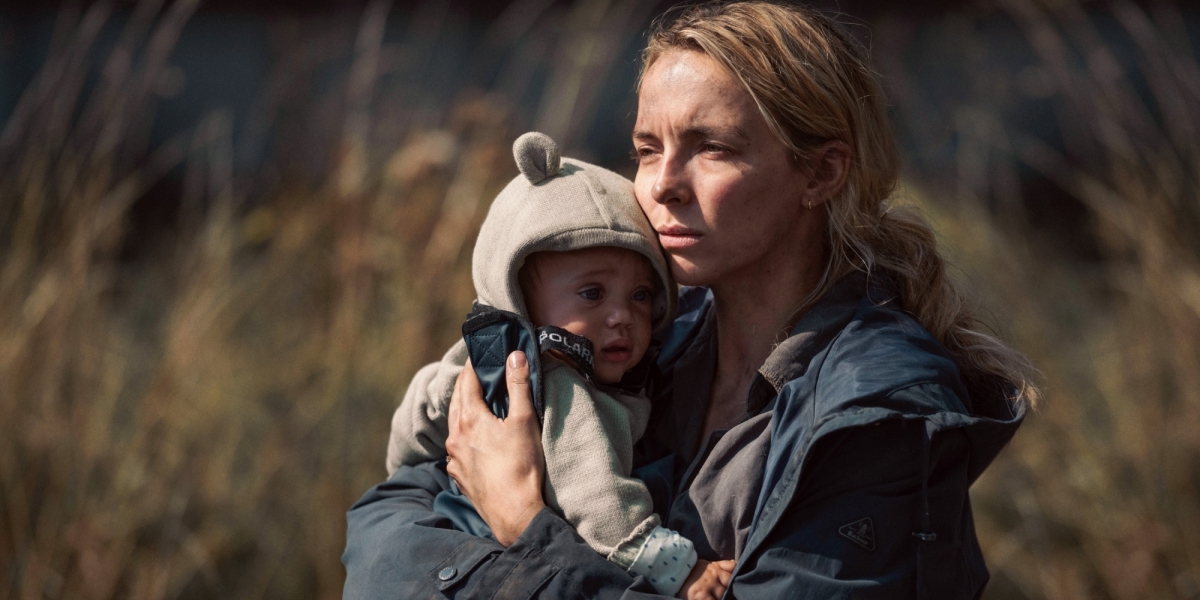
Behind the scenes photo of Jodie Comer on 'The End We Start From.' Photo by Anika Molnar.
Shot on KODAK 35mm film for the big screen by Irish cinematographer Suzie Lavelle ISC BSC, director Mahalia Belo's The End We Start From is an intimate study about the instinct for maternal survival.
The dystopian thriller follows an unnamed woman who goes into labor and gives birth to a child named Zeb, as London becomes submerged by an apocalyptic flooding disaster. The crisis forces her and her partner to abandon their home with newly-born Zeb, seeking refuge on higher ground in the north, only for the family to be ripped apart as civilization dissolves into anarchy.
The film was adapted by Alice Birch from the 2017 novel of the same name by author Megan Hunter, and stars Jodie Comer as the central mother character, with Joel Fry, Benedict Cumberbatch, Katherine Waterston and Mark Strong. It was lauded by critics for Belo's direction, Comer's gripping performance and Lavelle's intimate, dreamlike cinematography in conjuring up a picture of maternal strength in the face of climate catastrophe. It was nominated for nine British Independent Film Awards, including one for Lavelle's camerawork.
Lavelle and Belo are both alumnae of the UK's National Film & TV School but did not know one another personally having graduated respectively in 2006 and 2012. Belo's graduation film, Volume, won a BIFA award in the Best British Short Film category, and the director also earned a 2017 BAFTA Craft Award in the Best Breakthrough Talent category for the TV drama Ellen.
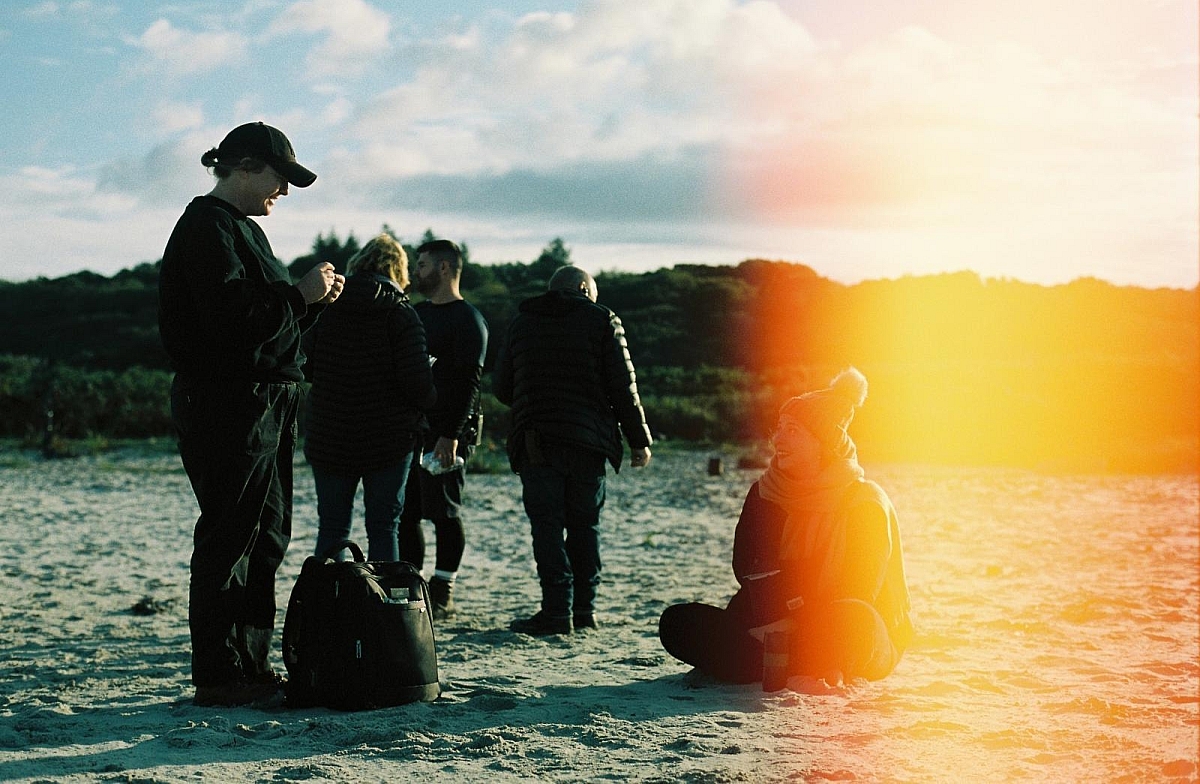
Behind the scenes photo of DP Suzie Lavelle ISC BSC on 'The End We Start From.' Photo by Ben Mankin.
After film school Lavelle began shooting 16mm films for fine artists and won the Irish Film & Television Award (IFTA) for Best Cinematography on first feature One Hundred Mornings in 2010. Her credits also include the BBC's Doctor Who, His Dark Materials and Normal People, as well as BBC/Hulu's sensual Conversations with Friends TV series which she shot on 35mm film.
"Mahalia and I connected really well over the script from the very first moment," Lavelle recalls. "I have young children and her intimate, subjective treatment of the narrative, with its metaphors about water, birth and the climate crisis, really resonated with me.
"Also, we were just coming out of the Covid pandemic and the isolation it enforced, so the idea of the central character being confined in the fishbowl of her home and then facing life's hurdles as she travels alone was very familiar. Along with seeing the crisis through the eyes and the behavior of our protagonist, the visual treatment was also all about the viscous quality of water, how things can be decomposed and literally washed away, but then refound through water."
She adds, "Having watched Mahalia's shorts, where the camera is often playful and operatic, I thought it would be really interesting to mix that with my more naturalistic approach to visual storytelling."
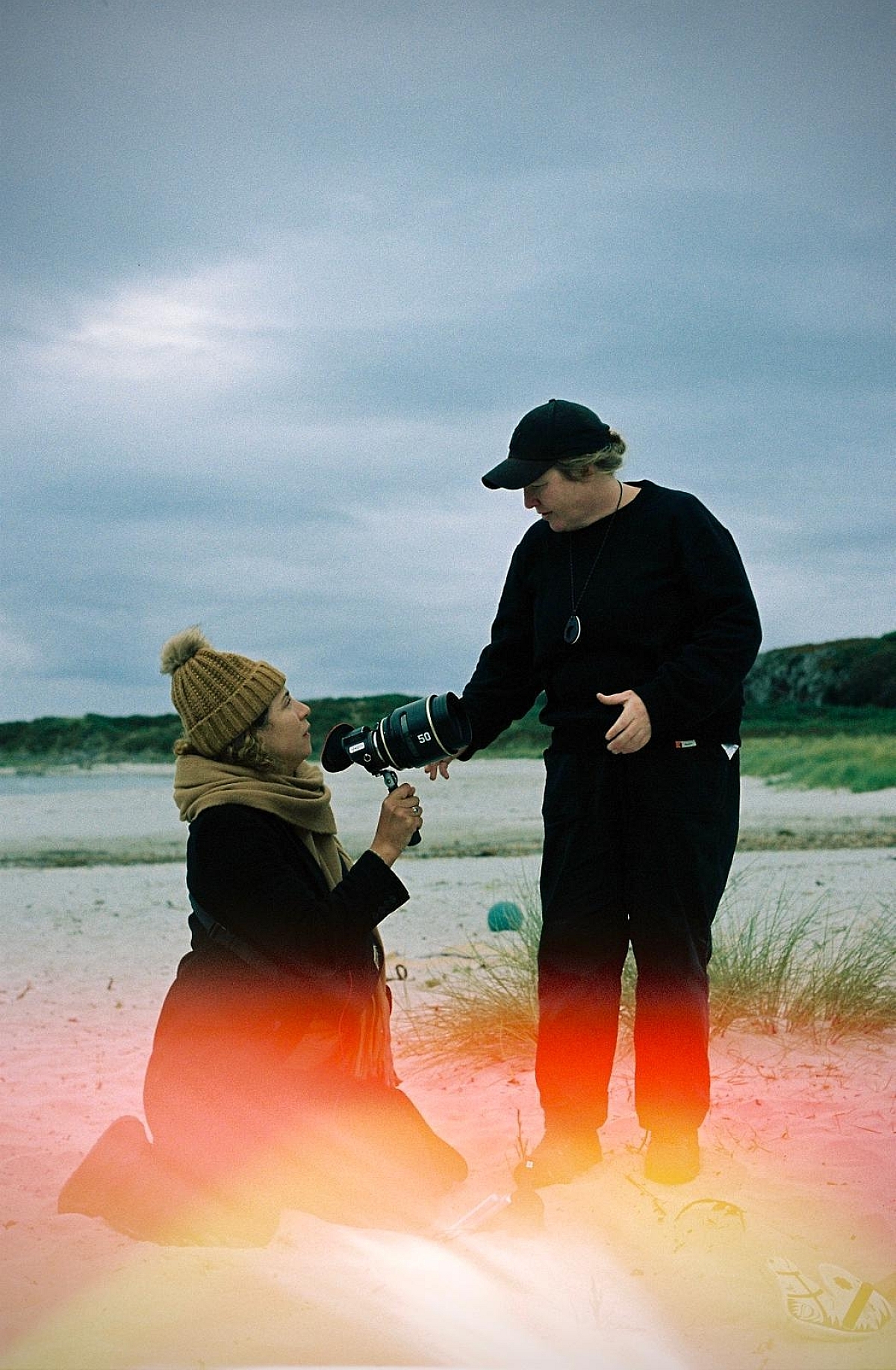
Behind the scenes photo of DP Suzie Lavelle ISC BSC on 'The End We Start From.' Photo by Ben Mankin.
Visual references for the movie's travelogue scenes included Walkabout (1971, dir. & DP Nicolas Roeg), along with Institute Benjamenta, or This Dream People Call Human Life (1995, dirs. The Quay Brothers, DP Nic Knowland BSC) for the visual texture of the main character's home, plus Stalker (1979, dir. Andrei Tarkovsky, DP Aleksandr Knyazhinskiy) for its metaphoric depictions of water, and camera movement through muck and mud.
When it came to shooting on film, Lavelle says, "Mahalia and I are both lovers of film. Even in our first meeting, we felt strongly that this story should be told on film. It was destined for the cinema, where so many spectacular disaster movies are shot in large format digital. But this was much more internal and subjective, with poetic, dreamlike visuals, that would be depicted best via the organic grain and texture of film.
Lavelle also says that, "Logistically, shooting on film can be really low-impact – you can keep the crew and the equipment footprint small and tight, and get up-and-running quickly with the camera. From a creative point-of-view, with film you can put your energies into the visual storytelling, rather than having to spend time on trying to make it look and feel like film when you shoot digitally.
"It was a big ask for the producers, but we did a heartfelt pitch for film. They listened, agreed and supported us, which was wonderful."
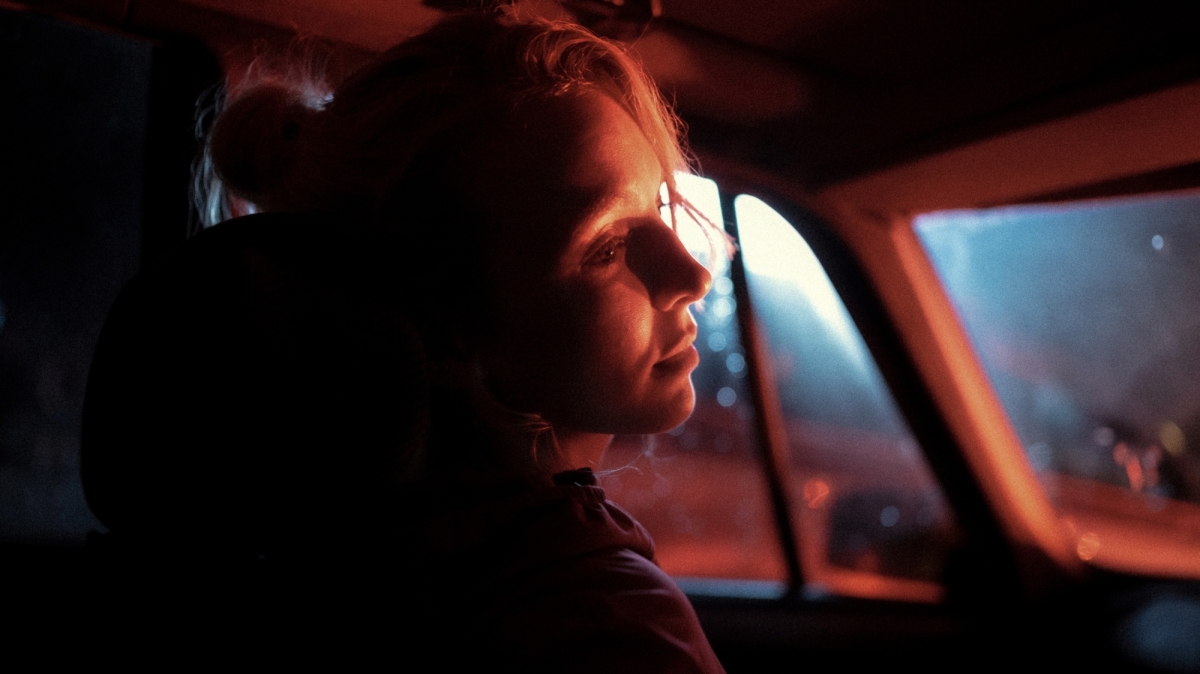
A scene from 'The End We Start From.'
Production took place over 30 shooting days, during a heatwave in the summer months of 2022, with as many as ten babies being needed to stand-in during that time, so as to keep with the pace of production.
Suitable dystopian locations were found on sites around the M25 London orbital motorway, and the final week was spent in the wilds of Argyll & Bute in the west of Scotland where the central character finds the safe haven of a commune. The explosive deluge of water that floods the house in the early part of the film was shot in a water tank at Artem Studios in London.
Lavelle opted to shoot The End We Start From using the same format she had harnessed for Conversations with Friends – namely 2-perf on KODAK 35mm film, which she describes as "a dream."
"2-perf is my favorite format at the moment, partly because of the gravitas that the widescreen field-of-view gives, especially for landscape work, and partly because I really love the stronger grain structure it delivers. It just feels more tactile and textural like independent cinema.
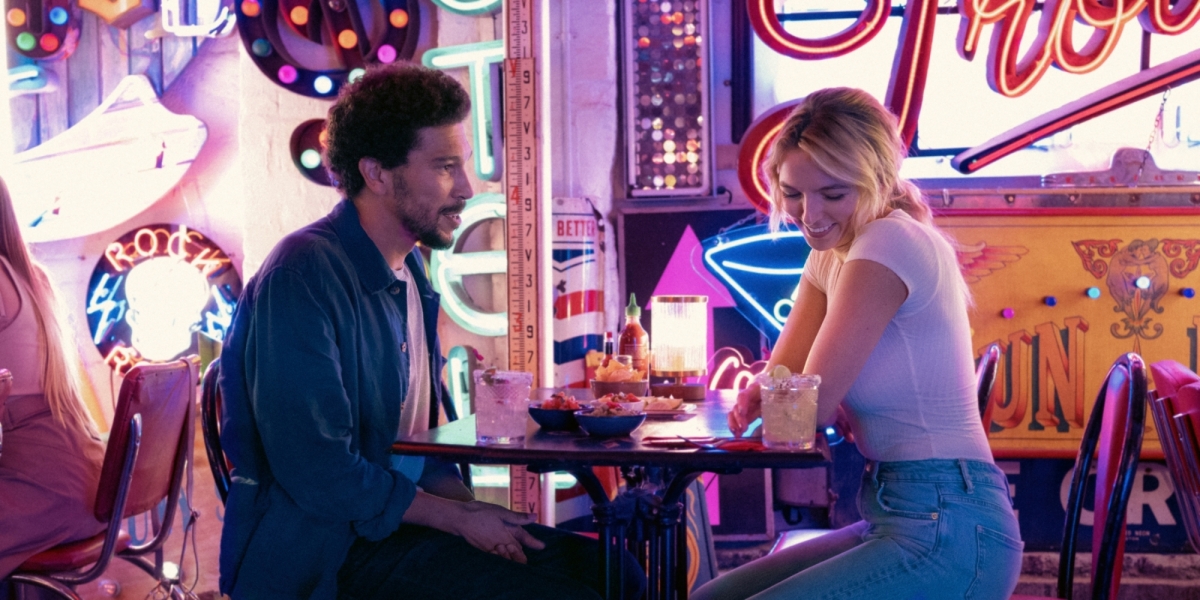
A scene from 'The End We Start From.'
"As we were having to shoot single scenes with different babies, the longer runtime of the magazines when shooting 2-perf was a massive advantage. We typically shot with 400-foot mags, which gave us eight minutes/eight seconds of shooting time."
The production carried two ARRICAM LT cameras for their flexible magazine mounting configurations – one rigged in studio mode for tripod and dolly work, the other used for shooting more operatic moves around the characters either handheld or Steadicam. An ARRIFLEX 235 35mm camera was used to capture some of the action at 50fps for slow motion sequences, and also mounted on a DJO Ronin 3-axis camera gimbal for a small number of other flowing moves around the characters, with a 200-foot magazine. Lavelle's lenses of choice were Cooke S5s. The camera package was supplied by ARRI Rental in London.
"I shot Conversations with Friends using wonderful vintage Canon K35 lenses, which are fast. But knowing this production was destined for the cinema screen, I wanted something a bit sharper. The Cooke S5s looked right and have beautiful skin tones. As they are light, small and uniform in size, I knew they would allow for quick lens changes and be less intimidating to breast-feeding mothers and their babies."
Lavelle says she considered using different film stocks for the production but went with KODAK VISION3 500T Color Negative Film 5219 for the entire shoot, just as she had for Conversations with Friends. Film processing and scanning was completed by Cinelab, along with dailies color by Cinelab colourist Darren Rae.
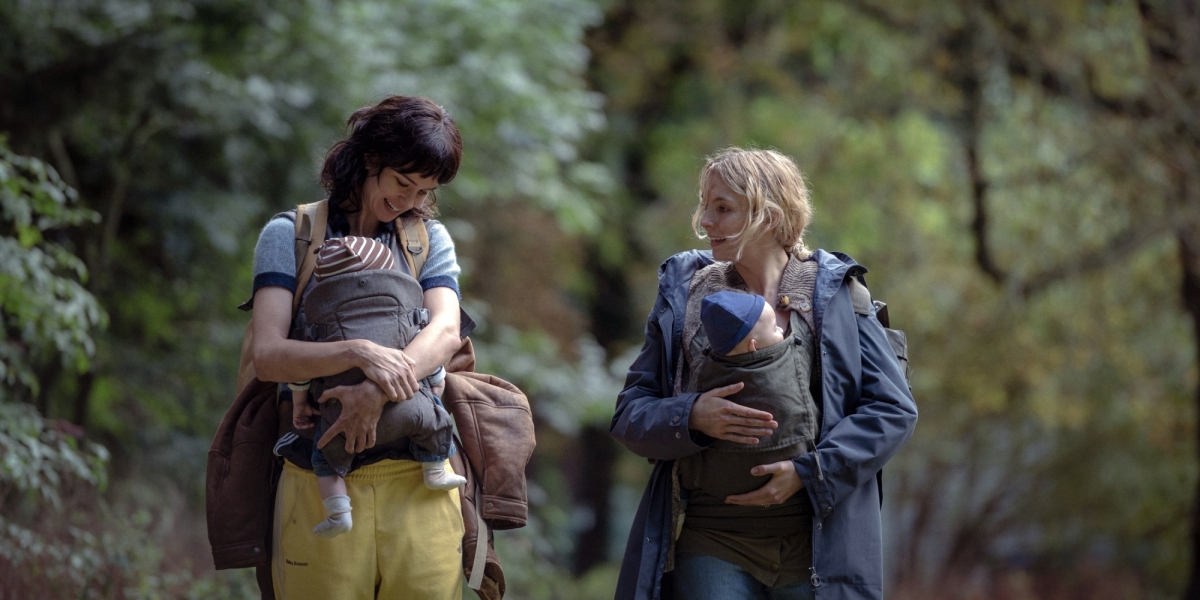
A scene from 'The End We Start From.'
"Knowing that we had a fairly small team, with muddy unit moves almost every day, it was much more practical to shoot with just one film stock," Lavelle observes. "I also thought the 500T would lend itself best to the poetic, low-contrast, dreamlike look we wanted, whilst holding details in the highlights, although I had to get used to shooting day exteriors with different strengths of ND filters.
"The 500T is super versatile for night work, and it absolutely loves color. I knew I could expose it slightly differently to bring more vivid color saturation and contrast to the commune sequence and to the flashback scenes of life as it used to be."
Lavelle operated on what was mainly a single camera production, assisted by Ben Mankin as focus puller. Charlie Cowper operated B-camera on days when a second camera was required, along with Steadicam. Additional photography was captured by Chloë Thomson BSC. Tony Fabian led the grip team, and James Bridger was the gaffer.
Explaining her philosophy behind the lighting, Lavelle says, her approach was "sourced-but-playful – driving the lighting through windows but being able to move shadows and reflections.
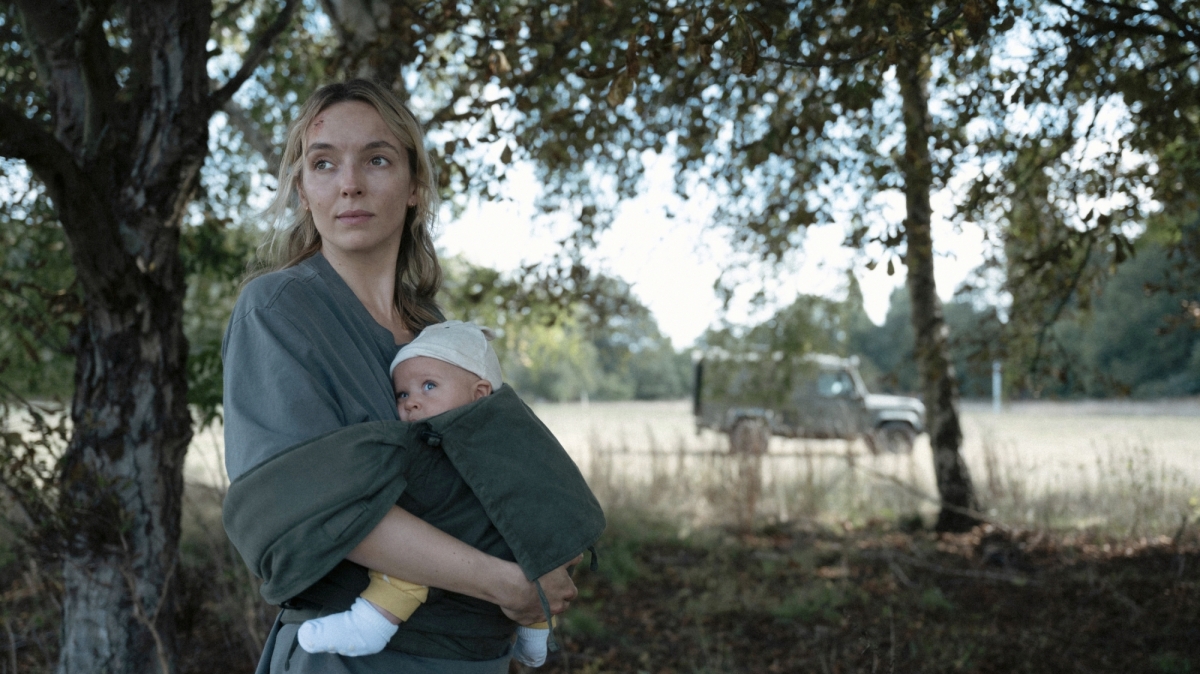
A scene from 'The End We Start From.'
"I also did not want to have equipment all over the set because of the mothers and their babies and wanted the actors to have freedom. So, I generally used the biggest lamp heads I could get and placed them as far away from the set or location as I could get them. I mostly used Tungsten lights – 20K Molebeams, T12s, plus Maxi and Mini Brutes. For firelit scenes, I had homemade wagon trains and other diffused sources. I had a few LED tubes and ARRI SkyPanels for the unexpected.
"I also wanted to experiment with senses of color. The fishbowl world of her home with her new baby was quite naturalistic and cozy, but as she moves outside things become greener and yellower to convey the feeling of the world stagnating. When she reaches the commune, the look became more idyllic, and the flashback scenes to what was once normal life, were altogether more vibrant and saturated."
Looking back at her experience of shooting The End We Start From, Lavelle remarks, "I had a great time. It was really fast with a lot of moves and mud. It was fun to work with Mahali and really interesting to bring our different styles together.
"I also really loved working with Jodie. From a cinematographer's standpoint she is a dream to photograph. She has a brilliant understanding of where the camera is and knows how to respond to that by changing or evoking an emotion in a split second.
"I would always shoot on film if I could. I love it. It gives me all the tools I need to create distinctive looks through lighting and exposure in a way that feels effortless."